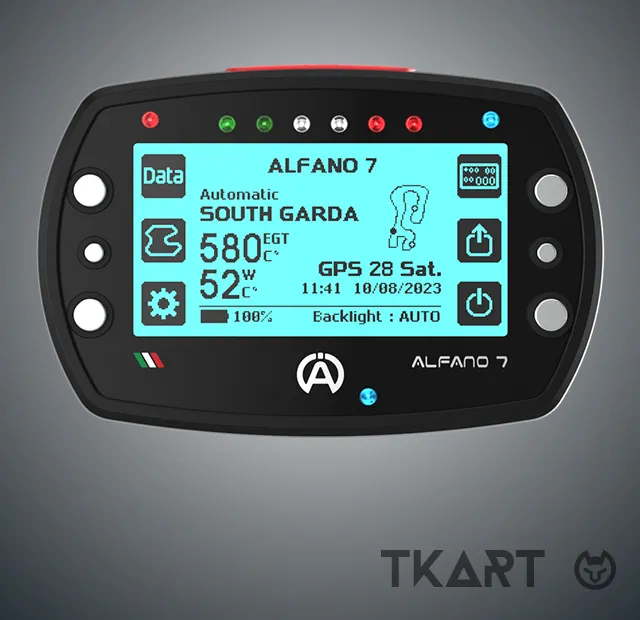Frequent Searches
Frequent Searches

 Exclusive Content
Exclusive Content

ALFANO 7: ALFANO'S KART DATA COLLECTION DASHBOARD IS NOW ALSO WIRELESS
A project that started in 2022, was concluded in 2023 and which led to the market launch starting in February 2024. Let's find out together everything you need to know about the Belgian manufacturer’s latest data logger, full of new features and future expansions
 THE INSTRUMENT
THE INSTRUMENT
 THE GPS SYSTEM
THE GPS SYSTEM
 CUSTOMIZATION
CUSTOMIZATION
 EXPANSION PACKS
EXPANSION PACKS
From a structural point of view, the Alfano 7 is made of a composite material formed by a fiberglass-reinforced ABS technopolymer, a choice already applied to most of the products made by the Belgian company. At the centre of the structure, whose shape is very similar to that of the Alfano 6 (to learn more, we recommend “First Analysis | ALFANO 6, telemetry for karts… on a made to measure basis”), we find [1] the 4-inch RGB (128 x 268 pixels) plexiglass display, which allows the display of various information, including lap time, RPM, water temperature, delta time compared to one's absolute best time of a session and the number of laps run in the current session. To make the data visible in all conditions, the screen has a backlight system, which can be changed in terms of colour and intensity. The latter self-regulates thanks to [2], an ambient light sensor that automatically varies its phosphorescence. There are 8 LEDs just above the screen. The [3] central six (which make up the "6 LED System"), which can be customized both in terms of colours and in activation values, are mainly used to indicate the RPMs for gear changes, although they can be set, based on the race screen used, to signal other information. The [4] more lateral ones, which act as alarm signals, can also be customized and set according to preference, and they are instead activated if and when the temperature values, detected by the appropriate sensors, are too high or too low compared to those set. In the lower part of the instrument there is an additional [5] LED indicator, called "status", whose task is to indicate secondary information, such as that relating to battery recharging (indicating whether the system is charging or not) or the status of sending data from the dashboard to the application.